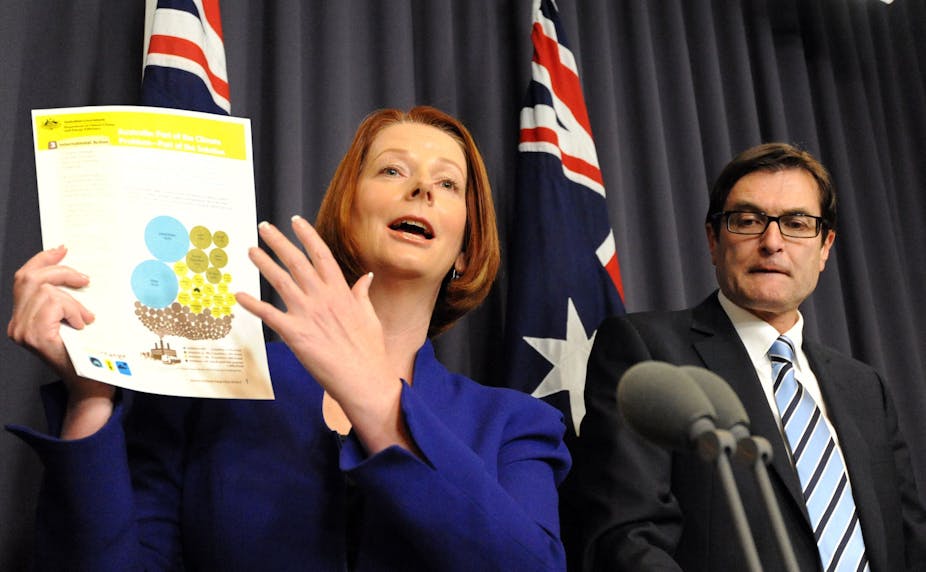At the National Press Club on 7 June the Treasurer, Wayne Swan, promised to release “hundreds of pages” of Treasury modelling on the impact of imposing a tax on carbon pollution. The hundreds of pages will no doubt set out the data and many assumptions underlying the projections of the economic effects of the tax.
An important part of gaining confidence in the projections is that the approach taken is open for scrutiny and debate by those who have the expertise and inclination.
Better still, perhaps, for public confidence in the results, if models constructed independently of the Treasury effort are available for comparison.
One model, constructed at the University of New England recently, can be used to compare projections as to the immediate – or “short run” - effects of introducing a carbon price. The carbon tax policy is to be implemented from 1 July 2012, so short run effects would mean the following one to two years.
The Treasurer has foreshadowed that the current modelling confirms the results of earlier (2008) Treasury analysis: the short run impact, although not insignificant, would be manageable. The University of New England modelling of a carbon tax of $30 (in fact, the higher end of the range being discussed) confirms this.
For example, in the short run, a $30 carbon tax may cause Australia’s real GDP to decline by 0.71%, consumer prices (CPI) to rise by 0.77%, and the price of electricity to increase by about 29%. These numbers, it is important to appreciate, ‘"isolate out" the effects of the carbon tax.
This means, for example, that GDP will be 0.71% lower than it would otherwise be. That is, if the economy had been predicted to grow by 3% without the tax, then a $30 tax would cause the economy to slow to a growth rate of 2.29%.
The good news is that a carbon tax of this magnitude may allow Australia to make a substantial cut in its CO₂ emissions. The simulation results imply an emission reduction of about 9.2% of current Australian emissions. This finding is consistent with the government’s aim to reduce emissions to 5% below 2000 levels by 2020.

A $30 tax will impose an extra expenditure burden on an average family (household) of about $798 annually and will raise $9.7 billion in carbon tax revenue in its first year of operation. This estimate of revenue is lower than the projection that Professor Garnaut has established ($11.5 billion) in his recent update.
As will be expected, the tax burden is unequally distributed among different household groups. Low-income households carry a relatively higher burden.
What does this mean? If a carbon tax of $30 per tonne was adopted by the government, the people hit most by a carbon tax would be those on the lowest tax bracket (under $37,000 per annum) and those on the highest tax bracket (over $180,000 per annum) would be hit least.
Average income families would be expected to pay an additional 1.1% towards this tax ($798) as a result of rising costs of living after the tax. A large portion of this extra expenditure ($383) would be due to the increased cost of electricity.
A number of ways of compensating households for the unequal burden of the tax have been discussed in policy circles. The final decisions on this, as will be determined by the Multi-Party Committee using the Treasury modelling, are likely to be quite complex.
Exploring the simplest options, nevertheless, is quite illuminating.
Perhaps the simplest approach to compensation for implementing the carbon tax would be to give each household $798 annually in the early years after introduction. This will require approximately 68% of the carbon tax revenue in its first year of operation but will bring some favour and comfort to what could be seen as an unpopular tax.
However if the government is planning to compensate low to middle income households only, using the average level of compensation ($798), it will reach approximately 61% of households in Australia at the expense of 42% of the carbon tax revenue.
Still, an even more support-winning third compensation option is available to the government. As the government has indicated from time to time, there is a possibility of reserving 50% of the carbon tax revenue for compensating the low-to-middle income households.
If such an option is adopted, the level of compensation could be as high as $950 per household in low-to-middle income groups.
All these results indicate short-term effects of a carbon tax whilst the Treasury modelling will extend projections over many years into the future. As others have stated, it is expectations of the carbon price in five to ten years from now and the stability of government policy on the issue, that will be critical for investment decisions.
Nevertheless, the effects at the time of introduction, and the amounts available for compensation, will clearly have an important bearing on the policy.

